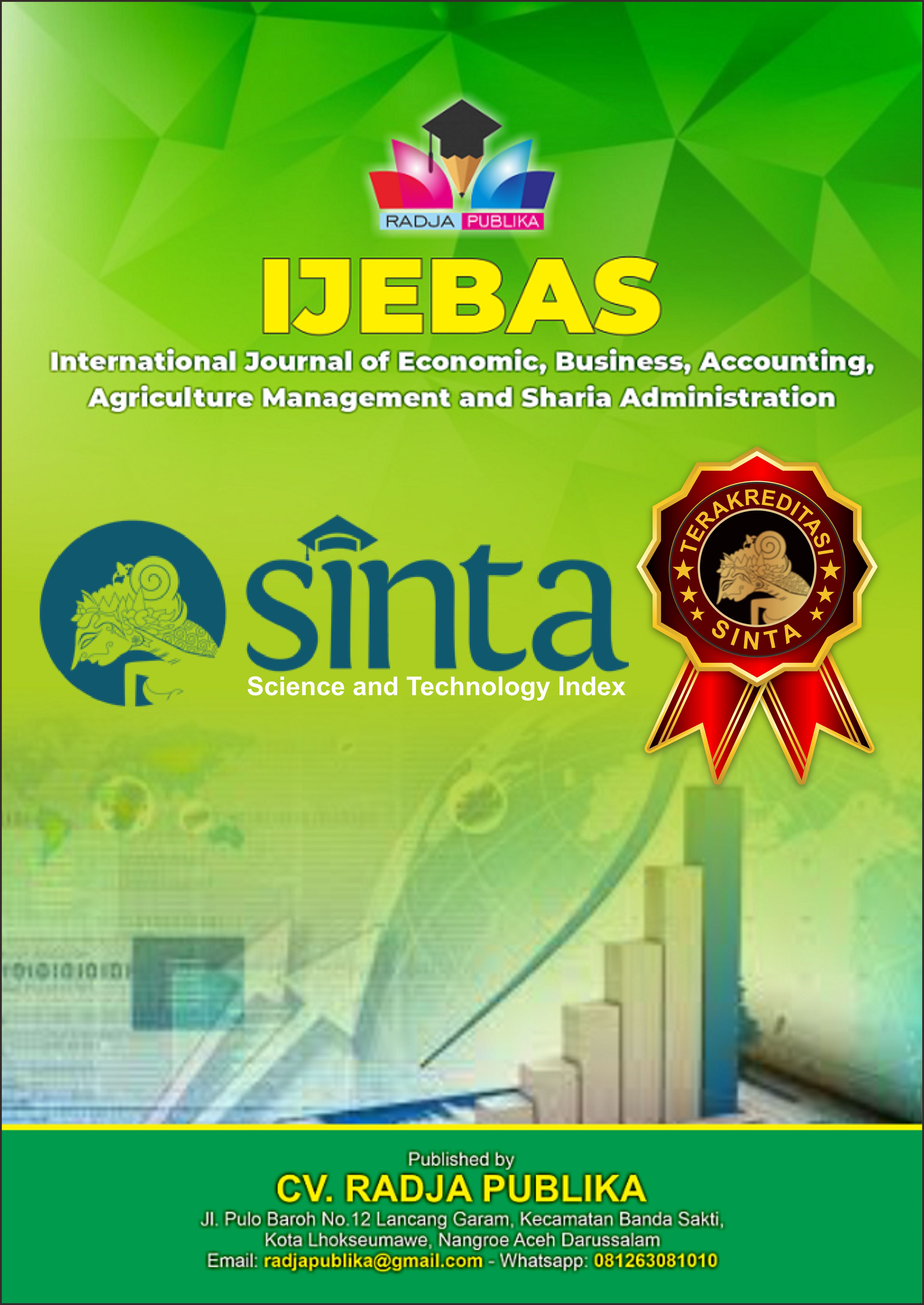THE EFFECT OF COMPENSATION ON EMPLOYEE PERFORMANCE WITH WORK DISCIPLINE AS AN INTERVENING VARIABLE FOR OFFICERS CLEANLINESS OF BUPATI SERDANG BEDAGAI
DOI:
10.54443/ijebas.v2i3.272Published:
2022-06-30Downloads
Abstract
This study aims to determine and analyze the effect of compensation on employee performance with work discipline as an intervening variable for cleaning officers at the Serdang Bedagai Regent's Office. The analytical method used is simple linear regression analysis to test the causal relationship between the causal factors and the effect variables. The results of this study obtained that tcount (4.891) > ttable (1.701), as well as the significance value of 0.000 <0.05, it can be concluded that the first hypothesis is accepted, meaning that compensation(X) has a positive and significant effectto Work Discipline (Z). it is known that tcount (2.502) > ttable (1.701), and the significance value is 0.01 <0.05, it can be concluded that the second hypothesis is accepted, meaning that compensation (X) has a positive and significant effecton Employee Performance (Y). it is known that tcount (2.473) > ttable (1.701), and the significance value is 0.03 <0.05, it can be concluded that the third hypothesis is accepted, meaning Work Discipline (Z)take effectpositive and significanton Employee Performance (Y). Path analysis shows that the direct effect of variable X on variable Y2 is 0.421. Meanwhile, the indirect effect through variable Z is 0.679 x 0.416 = 0.2824. From the calculation results obtained, it shows that the direct effect through the X variable is greater than the indirect effect on the Y variable.
Keywords:
Compensation, Work Discipline, Employee PerformanceReferences
Anwar Prabu Mangkunegara. (2011). Enterprise Resource Management. PT. Rosdakarya Youth. Bandung.
Anwar Prabu Mangkunegara. (2015). Company Human Resources. Printtwelfth. Rosdakarya Youth: Bandung.
Anwar Prabu Mangkunegara. (2017). Human Resource ManagementCompany, Bandung: Youth Rosdakarya.
Anwar, Suroyo. (2009). Individual Understanding, Observation, Checklist, Interview,. Questionnaire and Sociometry. Yogyakarta: Student Library.
Dasopang, K. H., & Rokan, M. K. (2022). Pengaruh Kualitas Pelayanan Dan Produk Pembiayaan Terhadap Minat Dan Keputusan Menjadi Nasabah Di Bank Syariah Indonesia Kcp. Kotapinang. Sibatik Journal: Jurnal Ilmiah Bidang Sosial, Ekonomi, Budaya, Teknologi, dan Pendidikan, 1(6), 755-762.
Edy, Sutrisno. (2011). Human Resource Management. Publisher: Jakarta,date.
Edy, Sutrisno, (2016), Human Resource Management, Kencana PrenadaMedia Group, Jakarta.
Ghozali, Imam. (2011). "Application of Multivariate Analysis With SPSS Program". Semarang: Diponegoro University Publishing Agency.
Ghozali, Imam. (2016). Multivariete Analysis Application With ProgramIBM SPSS 23 (8th Edition). VIII Printing. Semarang : Diponegoro University Publishing Agency.
Gunawan, R., Widiyanti, M., Malinda, S., & Adam, M. (2022). The Effect Of Current Ratio, Total Asset Turnover, Debt To Asset Ratio, And Debt To Equity Ratio On Return On Assets In Plantation Sub-Sector Companies Listed On The Indonesia Stock Exchange. International Journal of Economic, Business, Accounting, Agriculture Management and Sharia Administration (IJEBAS), 2(1), 19-28.
Malay SP Hasibuan, (2017). Human Resource Management, Jakarta: PT Bumi Aksara.
Masram and Mu'ah. (2017). Human Resource Management. Sidoarjo. ZifatamaPublisher.
Rahayu, Vebriana Tri, Vivi Ariyani and Soni Kurniawan. (2013). “The Influence of Leadership, Physical Work Environment and Compensation on Employee Performance at PT. PLN Madiun Branch". Journal of Management and Accounting Research, vol 1, no 1, February 2013 pp. 89-95.
Sugiyono (2015). Combination Research Methods (Mix Methods). Bandung: Alphabeta.
Sugiyono. (2016). Quantitative, Qualitative and R&D Research Methods. Bandung: PT Alphabet.
Zainal, Veithzal Rivai., et al. (2017). Human Resource Management. Jakarta:Press Eagle.
License
Copyright (c) 2022 Frederick Rudy Sentosa Rajagukguk

This work is licensed under a Creative Commons Attribution-NonCommercial 4.0 International License.







